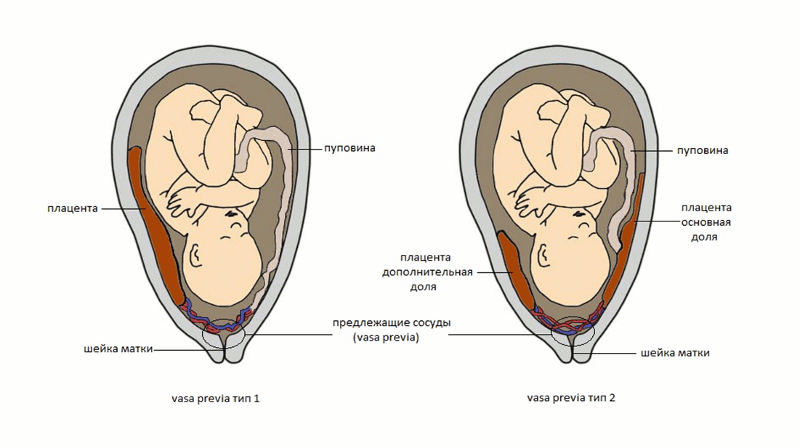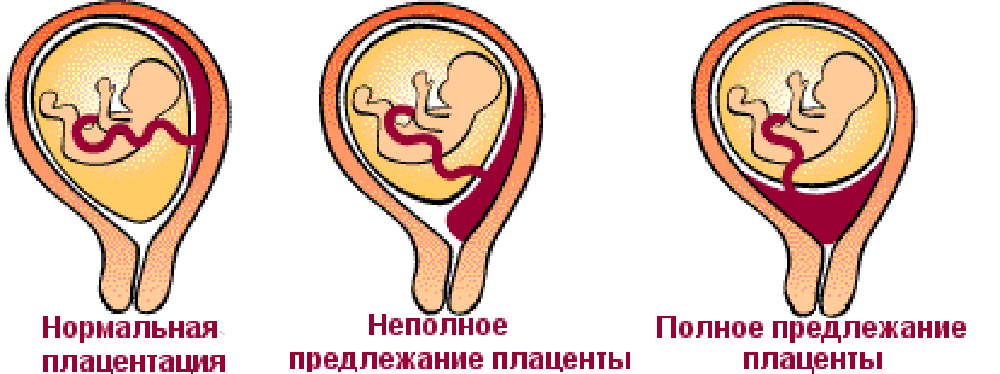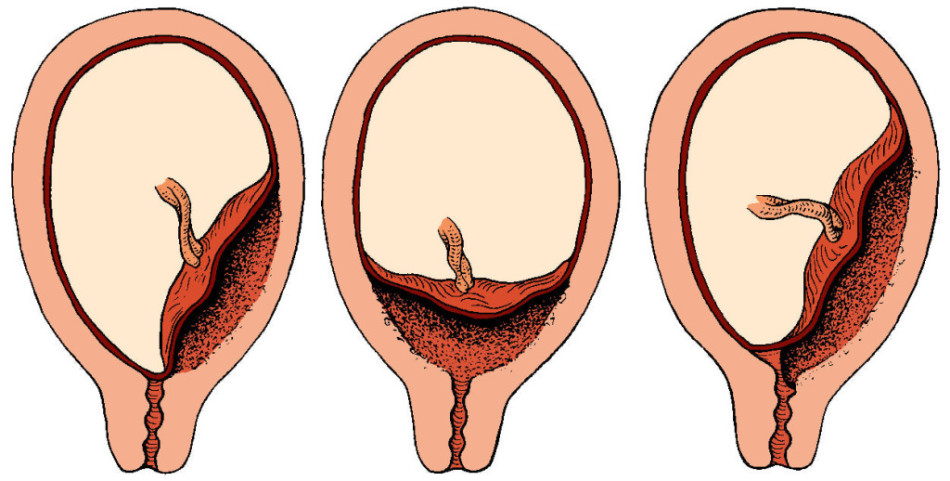As affects the lower presentation of the placenta during pregnancy and childbirth, what danger is such a diagnosis for the future mother and baby. The answers to these questions are easy to get by reading the article.
Content
- Classification of forms of presentation
- What does the low presentation of the placenta mean?
- Causes of low placenta presentation
- Low Presentation of the placenta during pregnancy: Symptoms
- What threatens the low presentation of the placenta during pregnancy?
- Low PRECESSED PROSODATION During childbirth
- Sex and low placenta presentation
- Low Presentation Plaster during pregnancy: Treatment
- Video: Low placenta is the norm?
- Placent presentation is a term used in obstetric and gynecological practice to indicate the location of the placenta in the uterine cavity
- Presentation may represent a high degree of risk of complications in the process of childbirth for a woman and a newborn. With normal intrauterine development, the placental fabric is attached along the back wall, sometimes with the transition to the side walls of the uterine cavity
- Cases when the placental fabric is shifted to the lower segments of the uterus and is attached to the cervix, thereby completely or partially closing the entrance to the birth canal for the fetus, belong to serious pathologies of pregnancy
Classification form presentation
Depending on the actual place of attachment, the placenta classify several types and forms of presentation, representing a more or less dangerous situation in childbirth.
The doctor can determine the physiological characteristics and a possible threat of termination of pregnancy, as well as the risk of complications of birth activity on the basis of the recommended planned ultrasound examination.

Complete presentation of the placenta
There is a dense overlap with the placental fabric of the inner pharynx of the uterus. In the process of childbirth, this will not allow the fetus to go through the birth canal even if the neck is completely disclosed, so normal birth becomes contraindicated.
Central presentation of the placenta
The opening of the input of the cervical canal is completely blocked by the main part of the placenta. With a local vaginal examination by palpation, it is impossible to probe the fetal membranes, since they are closed by the placenta fabric.
Such a diagnosis is also a severe pathology and eliminates the possibility of normal births.
The lateral presentation of the placenta
The main part of the placental fabric is placed on the right or left of the inner pharynx. In such a situation, the doctor must determine the size of the site blocking the hole of the cervical canal. This case refers to incomplete presentation.
The regional presentation of the placenta
In the process of vaginal examination, the fetal membranes located in the immediate vicinity of the edge of the cervical canal are felt. The placenta is recorded on the very edge of the inner pharynx.

The posterior presentation of the placenta
Such a location refers to cases of incomplete presentation, when the main part of the placental fabric is located in the rear segment with a displacement to the lower.
The anterior presentation of the placenta
The formation of placental fabric according to the anterior segment is not considered a pathology. The options for the front and posterior presentation correspond to the norm until the 25-27th week of gestation.
Over the next 6-8 weeks, together with the active intrauterine growth of the child and the walls of the placenta cavity, it may shift, and by the time of the beginning of the birth activity there will be no risk of complications.
What does the low presentation of the placenta mean?
Low presentation is the situation when the placenta is fixed at a short distance (less than the z cm) from the entrance to the cervical canal and does not cover it.
In this structure, ordinary birth is quite feasible in the absence of other risks. With further observation, 2 options for developing the situation are possible:
- moving the placenta upwards with the growing walls and the possibility of the normal flow of childbirth
- downshift - then there is a case of a partial or absolute overlap of the birth canal, so the need for obstetric care, as well as the degree of risk of natural birth, should be evaluated by the observant doctor

Low placenta on the back wall
This is a special case of lower presentation, when the placenta is placed in the lower segment, but the main part of the placental fabric is located along the rear wall.
Low regional presentation of the placenta
It is also one of the options of lower presentation with placement along the edge of the inner pharynx.
The tasks of an ultrasound conducted at the 36-37th week of pregnancy include clarification of the actual degree of presentation, i.e. Assessment of the size of the overlap and development of pathology:
- 1 degree - placenta is located near the inner hole of the cervix, but distinctly shifted from it, at least on the cm
- 2 degree - the lower part is recorded near the very edge of the entrance to the cervical canal, but does not close it
- 3 degree - part of the placenta partially or entirely blocks the internal pharynx of the uterus. In this case, the main part of the placental fabric is shifted along the front or back wall
- 4 degree - the placenta is entirely placed in the lower segment and tightly blocks the entrance to the cervical canal with its main part

As a rule, the diagnosis of the 3rd or 4th degree of pathology involves surgery with obstetric care (planned cesarean section) to exclude injuries and mortality of the newborn and women in labor.
Causes of low placenta presentation
The primary formation and further growth of the placenta is observed in that segment of the uterine cavity, where the fetal egg was initially attached. The causes of fixation in the lower area are conditionally divided into 2 groups.
From the future of the future mother:
- The acquired changes in the structure of the uterine mucosa, formed as a result of adopted inflammatory diseases of various nature - endometriosis, endometritis, adnexitis, parametritis, salpingitis, endocervicitis
- Mechanical damage to the endometrium - abortion, curettage, complicated birth, surgical interventions
- Physiological characteristics, including acquired changes in the structure of the uterus or the presence of various formations - underdevelopment of the internal genital organs, injuries of the pelvic area, uterine bend, fibroids, cysts
- Diseases of the heart, liver and kidneys leading to the formation of stagnant processes in the pelvic area and internal genital organ
- Hormonal disorders entailing disruptions in menstrual function - irregular cycle, abundant menstrual discharge, severe pains
From the fetus:
Reducing the activity of enzymes for the development of the membranes of the fetal egg due to internal processes. As a result, a fertilized egg, moving into the cavity, cannot implant into the side walls of the uterus and is fixed in the lower departments.
Low Presentation of the placenta during pregnancy: Symptoms
- The main symptoms that signal low presentation are repeated, intense or meager bloody discharge, often not accompanied by painful sensations
- Bleeding is external, without the formation of hematomas in the cavity, may appear for no certain reasons already in the early stages, starting from the 12-14th week and last until giving birth
- More often, these symptoms are observed in the 2nd half of the gestation (28-32 weeks) and intensify by the end of the third trimester. The intensity and frequency of bloody discharge does not depend on the degree and form of presentation, but are associated with the physiological structure of the tissue

- The cause of bloody discharge is a partial detachment of the small sections of the placenta as the walls of the uterus are stretched
- Adverse external factors can provoke bleeding - high physical activity, overwork, stress states, gynecological examination, sexual intercourse, hypothermia, long trips, visiting the bathhouse
- The indirect symptoms of low presentation are the improper intrauterine position of the fetus, the offset of the bottom of the uterus
What threatens the low presentation of the placenta during pregnancy?
Diagnosis of low presentation may mean the development of concomitant complications of pregnancy:
- The threat of miscarriage is due to periodic cases of partial detachment of placental tissue, which leads to an increased uterine tone, repeating bleeding and impaired fetal nutrition
- Anemia and hypotension (reduced blood pressure) - develop, as a result of regular bleeding, cause weakness, headaches, dizziness, increased fatigue
- Incorrect presentation of the fetus - due to insufficiency of space in the lower section of the uterus for the location of the baby's head
- Hypoxia and the probability of delayed fetal development - the weakening of blood flow in the tissues of the placenta reduces the child’s admission of enough oxygen and the main nutrients, which causes chronic fetal hypoxia and affects its proper development and growth

Low PRECESSED PROSODATION During childbirth
In case of diagnosis of low presentation, the expectant mother should be under the constant supervision of specialists.
Childbirth can take place both naturally and with the help of surgical intervention. The choice of the method of obstetric care is determined by the attending doctors and depends on the general condition of the woman, the degree of presentation, the arrangement of the fetus at the time of childbirth, the presence of bleeding, as well as other concomitant factors.
The planned cesarean section is carried out in 75-85% of cases of lower presentation for a period of 38 weeks.
Spontaneous birth in such a situation is extremely dangerous, since the complete detachment of the placenta can cause abundant bleeding, up to the probability of a fatal outcome for the woman in labor and fetus.

Direct indications for the operation are:
- Full low presentation of the placenta
- Pelvic or foot presentation of the fetus
- A scar on the uterus after surgery
- Multiple or late pregnancy
- Injured anamnesis - inflammatory diseases, abortion, fibroids or polycystic uterus
- Ongoing intense bleeding from blood loss of more than 200 ml
If there are no indications for cesarean section, then in the presence of active labor, normal birth is carried out. In the case of bleeding, the obstetrician must decide on emergency cesarean section.
Sex and low placenta presentation
Sexual contacts and sexual games in the event of lower presentation are strictly contraindicated, since any physical pressure, as well as sexual arousal can provoke an intensive reduction in the uterine muscles, partial or complete detachment of the placenta, bleeding and a threat of termination of pregnancy.
Low Presentation Plaster during pregnancy: Treatment
There is no type of therapy that can affect the actual location of the placenta. Therefore, the treatment of a woman consists in constant observation, timely relief of the intensity of blood discharge and the preservation of the fetus.

The expectant mother is contraindicated in any physical and psycho -emotional loads, as well as other conditions that can cause bleeding and lead to miscarriage. During the rest, take a pose, lying on your back, lifting your legs slightly.
Particular attention should be paid to proper nutrition, timely conducting the necessary clinical studies and analyzes.
Starting from the 2nd trimester of pregnancy, treatment consists in taking the following drugs:
- to improve the elasticity of the walls of the uterus, relieve spasms and increased tone - drotaverin, papaverine, ginipral
- to prevent the development of iron deficiency - actorrin, hemochelper, ferlatum, hemopher, etc.
- to enhance blood circulation and nutrition of placental tissue and fetus - churantil, actovegin, folic acid, vitamin E, magn6 B6






